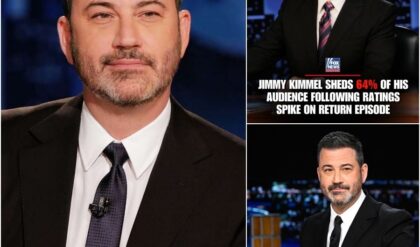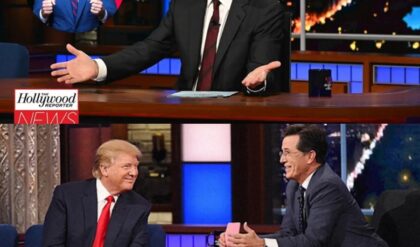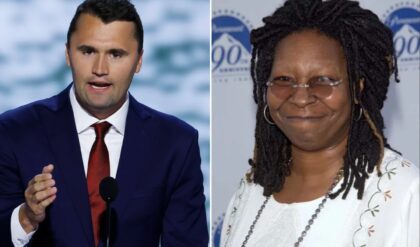4 band members, 6 songs, 20 minutes, 1.9 billion viewers worldwide, and a performance that made history.
Nearly four decades ago, 1.9 billion viewers worldwide tuned in to watch one of the largest live music events ever held – the Live Aid 1985 concert – with a lineup that included famous names such as Elton John, David Bowie, U2 and Paul McCartney.
It was also considered a unique event at the time, when it brought together all these stars for charity.
But after all that time, what makes Live Aid 1985 still engraved in the memory of popular culture and resonates to this day, is probably the mesmerizing, inspiring, soul-stirring performance of legendary rock band Queen.

Audience cheers for Queen at Live Aid 1985 | Source: ZUMA Press
What was Live Aid 1985?
Organised by artist and political activist Bob Geldof, Live Aid 1985 was a pair of concerts held simultaneously in London and Philadelphia to raise money for the Ethiopian famine.
It may sound hard to believe, but at the time, Queen were considered to be “past their prime”. Their two most famous albums, A Night at the Opera and News of the World, had been released a decade earlier, and despite the isolated successes of Radio Ga Ga and I Want to Break Free, many felt the rock band were on the brink of their careers.
Freddie Mercury and Brian May | Source: Getty
Queen were also being criticised for defying a United Nations boycott call and performing in apartheid South Africa. Queen frontman Freddie Mercury was also dealing with toxic talk about his sexuality.
But, as the title of one of the band’s famous songs suggests, The Show Must Go On.
How did Queen’s performance at Live Aid 1985 go?
Queen did not open or close Live Aid 1985. They chose a rather unusual time slot, 6.41pm, when the sky was still bright, a far cry from their previous performances. Their performance was sandwiched between other giants such as Elton John and David Bowie.
In an atmosphere of mixed expectation and disbelief at Wembley Stadium, the four members of Queen confidently took to the stage. Gone were the elaborate, gaudy leather outfits of the 70s, they wore simple white suits. Nothing was going to distract the audience from the performance.
And after just a few piano notes of Bohemian Rhapsody, Freddie Mercury and his bandmates knew they had the full attention of the 72,000 people in the stadium.
After Bohemian Rhapsody came the upbeat strains of Radio Ga Ga, and the most magical moment came right after. Freddie Mercury, with his magical four-octave voice, improvised the lyrics. “Ay-oh. Ay-ho.” And in turn, the crowd sang along.
In just 30 seconds, Mercury seemed to have control of all 72,000 vocal cords, creating the notes that would later be dubbed “Round the World.”
Like all artists, Queen had only about 20 minutes to play. Like all artists, Queen were encouraged by the organisers to play their biggest hits.
But unlike their peers, Queen’s music was always written with a compelling drama, as if designed specifically for stage performance. With We Will Rock You, the audience’s stomping and clapping amplified the size of Wembley Stadium, turning the show into a rhythmic earthquake.
So it’s hard to believe that Queen were actually nervous about Live Aid. Backstage observers have revealed that the four members argued in frustration, worried that the audience would lose interest in the band.
These worries were not unfounded. Unlike solo concerts, the audience at a multi-artist festival like Live Aid was not necessarily a fan of the band.
Not to mention that bands like Queen often have very detailed control over every element of the performance, from sound to lighting. At Live Aid, that was a luxury they did not have. That night, sound problems did indeed occur, interrupting the performances of Paul McCartney and Led Zeppelin.
But when Freddie Mercury returned to the piano and began to sing the echoing lines of We Are The Champions to close the performance, it seemed that Queen knew they had succeeded, and this song was the celebratory lyrics for that victory.
How did Live Aid 1985 change the world?
Live Aid 1985 was never expected by the organizers to become one of the most memorable milestones in popular culture.
However, with a live audience of 72,000 in London, 89,000 in Philadelphia, and a television audience of 1.9 billion people in 130 countries, the event has since been dubbed “the day music changed the world”.
Wembley Stadium packed at Live Aid 1985 | Source: Getty
According to Bob Geldof’s website, the event raised approximately £150 million for Ethiopia. Live Aid tickets cost £25 each, with £20 going to charity. Television viewers were also encouraged to donate money by phone, and at its peak, Live Aid received up to £300 per second.
Live Aid 1985 also sparked a wave of donations from many Western countries to Ethiopia, according to volunteers in Africa.
As for Queen, just days after their legendary London performance, the band’s Greatest Hits compilation album immediately climbed to the top 20 of the US music charts.
But as every fan knows, Queen’s performances, no matter how mesmerizing and epic, cannot be looked back on without feeling a tinge of sadness.
Just a year after Live Aid 1985, Freddie Mercury was diagnosed with HIV/AIDS. That was also when he stopped performing live with the band. And five years later, Mercury died at the age of 45.
One of Freddie Mercury’s last live performances with Queen in 1986 | Source: The New York Times
Seeing Freddie Mercury not only so full of life, but seemingly transmitting that life to the entire stadium, even the world, unaware that death awaited him not far away, added an extra layer of tragedy to Queen’s performance at Live Aid.
But perhaps that is also the biggest reason why this glorious performance, and the artists who created it, are immortalized and stand the test of time.
Do you love music and want to enjoy quality, curated music?
RadioOnTV is a 24/7 music and entertainment channel on Youtube, produced and operated by Vietcetera, SpaceSpeakers, BEAT Network and Dentsu Redder. Don’t miss 24 hours of interesting lifestyle content, curated music playlists and a series of exclusive shows only available on RadioOnTV.
Turn on RadioOnTV today to live the flow of contemporary music!





